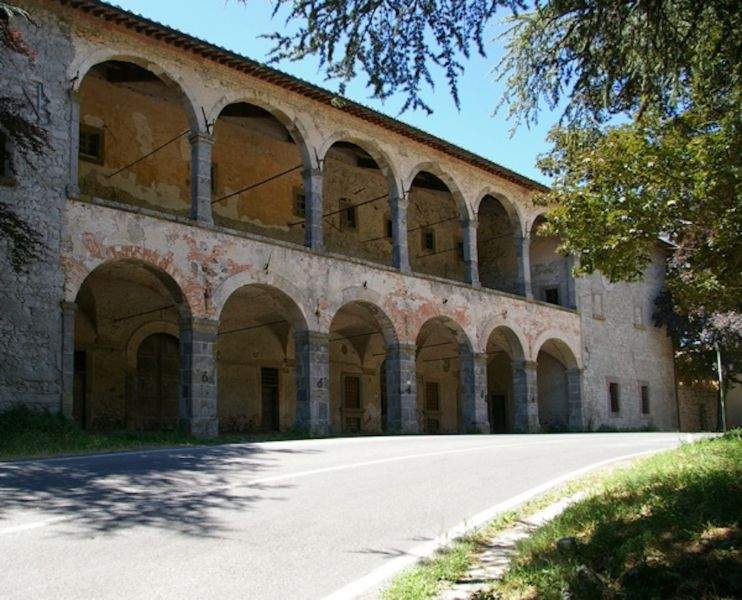Siena, Buontalenti's Osteria is in total neglect: case reaches Parliament
There is an urgent need to ensure the protection and enhancement of the so-called “Osteria Grossa” in Radicofani (Siena), an important 16th-century structure that is, however, in complete disrepair: this is the complaint of MP Giuseppina Occhionero of Italia Viva, who addresses a question to the minister of cultural heritage to ask what initiatives MiBACT intends to put in place to save the endangered property.
The Osteria Grossa is a large building located along the Via Francigena and was built between 1583 and 1587 at the behest of Grand Duke Ferdinand I de’ Medici, designed by architects Bernardo Buontalenti (Florence, 1531 - 1608) and Simone Genga (Urbino, 1530 - 1596), near the village of Radicofani. It is a very conspicuous building with a double loggia of six arches on the façade, one placed on the street level and the other on the upper floor. The Osteria was built to provide lodging for pilgrims and, more generally, travelers. On the ground floor it had stables, kitchens, dining rooms, the entrance and rooms for the guards; on the second floor were the apartment of the managers, the more important rooms, and the chapel of the Santissima Annunziata, while on the second floor were the simpler rooms and servants’ quarters. The Osteria was used as a post station until the end of the 19th century, when it was acquired by the Bologna family, who made it their private home.
The building has had illustrious guests: two popes (Pius VI and Pius VII), grand dukes of Tuscany (Ferdinand I, Cosimo II, Leopold II), Emperor Joseph II of Austria, and cultural personalities such as Giacomo Casanova, the Marquis de Sade, Stendhal, François René de Chateaubriand, John Ruskin, Charles Dickens, and many others have passed through here. In one of his publications, historian Leonardo Carandini described the Osteria Grossa as “the first hotel in Italy.” And it is a heritage that is in danger of ruin: it is December 26 the news of the collapse of a perimeter wall, also denounced by Parliamentarian Occhionero, who speaks of a “structure [...] in total abandonment”: the situation, she says, “is, to all evidence, unacceptable, considering the historical-cultural value and artistic value.”
Occhionero is also joined by the mayor of Radicofani, Francesco Fabbrizzi, who declares to the newspaper Il Cittadino, “At last an issue for which my administration has been fighting for years is landing in Parliament. We are dealing with a historical and architectural asset of extraordinary value that has been left in neglect by the current owner while collapses occur. And it is significant that an MP is dealing with it, demonstrating the importance of this building, which has welcomed famous people over the centuries. It was the calling card for those arriving in Tuscany and at the same time a ’luxury’ hotel for those preparing to leave, wanted by the Medici.” The hope, therefore, is that something will be done as soon as possible.
 |
| Siena, Buontalenti's Osteria is in total neglect: case reaches Parliament |
Warning: the translation into English of the original Italian article was created using automatic tools. We undertake to review all articles, but we do not guarantee the total absence of inaccuracies in the translation due to the program. You can find the original by clicking on the ITA button. If you find any mistake,please contact us.



























